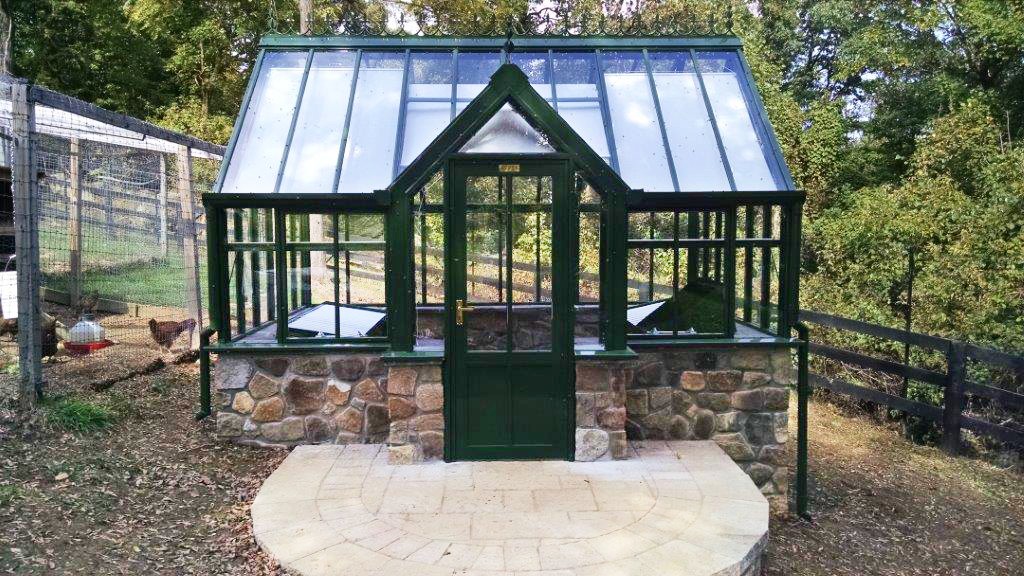 Leeann Lavin is a writer and blogger based in New York, her company Duchess Gardens has award winning, international experience of designing and implementing unique and creative custom garden designs.
Leeann Lavin is a writer and blogger based in New York, her company Duchess Gardens has award winning, international experience of designing and implementing unique and creative custom garden designs.
Leeann has also had publishing success with her book “The Hamptons & Long Island Homegrown Cookbook”, which shows off her passion for home grown cuisine from planting to plate.
First kiss. A secret rendezvous amid the cloak of ferns. Twinkling lights glimmering like stars amid exotic blooms. The heady scents of intoxicating orange blossoms, chocolate-scented orchids or night-blooming Jessamine enrapture even the reluctant romantic.
Glittering greenhouses inspire utopian dreams in us all.
None more so than artists.
The magic and mystery of glass-covered gardens have long captured the imaginations of painters, cinematographers, and writers who seek to evoke the romance, fantasy, and otherworldly charms of the glasshouse.
The sensory embrace of a greenhouse is such a powerful connection that it serves as both a moody character all by itself and as a construct for an enduring work of art.
The Gilded Age – a time of great romance and prosperity when glasshouses were first built – embraced glass rooms infused with more than horticulture. For them it was a not simply a place to keep plants.
Rather, these denizens of high society and the epitome of fine arts patrons considered the conservatory’s “extra botanical functions” a nexus of gardens, literature & social history where “novelists and garden writers were at one,” as noted by The Journal of Garden History.
Today, Hartley Botanic greenhouses tip their spade to the Victorian’s master builders.
They may use toughened safety glass but the patrimony remains. The company continues to utilize the Gilded Age’s enduring conservatory design including the brickwork walls to the base for planthouses or a supporting wall for a lean-to.
In Victorian literature, the glasshouse is seen not only at the royal court.
Time and again the conservatory is presented as the setting for the performance of social encounters of the more intimate kind. The Hero of Henrietta Temple goes even further saying, “It is impossible to live without a conservatory.”
Couldn’t have said it better!
As a place that conjures garden sprites, affairs of the heart and conspicuous consumption, the conservatory long served as the canvas for fine art and family portraits, too. Think John Singer Sargent or Edouard Manet.
Manet’s signature painting, In the Conservatory is a couple’s official portrait painted in what the online docents describe as the “hothouse attached to their home” and suggest that the “wife is a hothouse flower herself – a fashionista being observed in their most important garden room”.
The desire to escape to the charm of the greenhouse was a very successful literary device eventually utilized by cinematographers.
Glasshouses are Movie Stars

When a movie reviewer writes about Martin Scorsese’s film of Edith Wharton’s Age of Innocence, he notes, “Certain scenes linger in the mind.”
Who wouldn’t feel the pulse-quickening throb when viewing the “lush scenes” filmed at The New York Botanical Garden’s Enid A. Haupt Conservatory? The world-class greenhouse is a dazzling scene-stealer that brought Wharton’s prose to enthralling Technicolor: “It was in the conservatory that stretched its dead-black bulk down the side street that he had taken his first kiss from May.”
First kisses can lead to, well, marriage.
The greenhouse is the star in yet another film, Green Card. Here, the rooftop apartment with its spectacular greenhouse attached is the ultimate object of the protagonist’s affection. Cinema Botanica rhapsodizes the greenhouse “oozes charm and charisma” and further opines the movie should’ve been named, Green House, given the leading role and beauty of the transporting garden room filled with “magnificent tree ferns, fountain, that roof, and the overall feeling of an exotic, faraway but at the same time very intimate place.”
The beautiful conservatory in the film Chéri is considered the star. “The plants in the conservatory scene are luminous and overpowering. There was nothing spared when it came to the set details in Chéri and as a result, we are visually engrossed by the film.”
The conservatory’s moody, scene-stealing noir atmosphere can be viewed in TV’s Kojak: None so Blind and the film it was based on: The Big Sleep.
Raymond Chandler’s private detective Philip Marlowe – played to perfection by Humphrey Bogart — is hired by a crippled, embittered old man in a conservatory: “Wrapped in his blanket in the heat of the hothouse, spouting gothic grotesqueries like ‘orchids flesh is too much like the flesh of men, and their perfume has the rotten sweetness of corruption.’”
Victorian Twitter posts?
The Victorian novelists’ praise for the greenhouse could be today’s Twitter feeds!
“The conservatory adds beauty and cheerfulness to the house,” wrote one. “Brings the picturesque indoors,” claimed another.
The new conservatory of Mablethorpe House in “The New Magdalen” describes a “varied and brightened scene in this ancient mansion…the winter garden of rare plants and flowers.”
According to Toby Musgrave, “Garden History Matters” and MyGardenSchool:
“The greatest of all private Victorian glasshouses has to be the Great Stove created at Chatsworth for the 6th Duke of Devonshire by the pioneering glasshouse designer and his head gardener Joseph Paxton who received a knighthood for his design of the Crystal Palace for the Great Exhibition of 1851 — a glasshouse six times the size of St Peter’s Basilica in Rome.
The Great Stove gave a stimulus to plant hunting, helping establish a fashion for conservatories and tender exotics both in the large gardens of the wealthy and also in the gardens of the ever-expanding suburbia. A fashion that is still with us today.”

